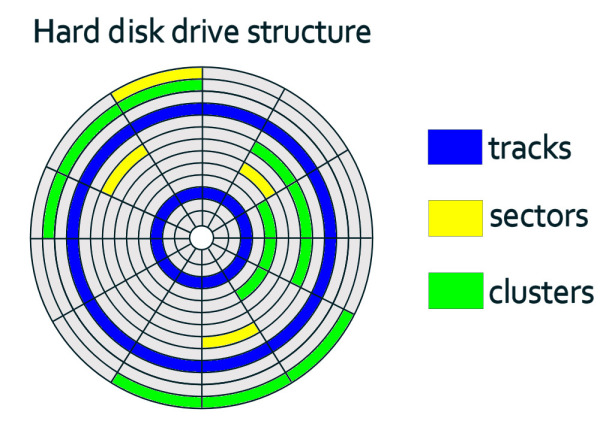[10:55 Tue,2.January 2018 by Thomas Richter] |
A general rule is to never use more than 80% of the storage capacity of a hard disk - but hardly anyone is keeping to it, why shouldn&t you use valuable hard disk space, for example 200GB of 1000 GB or 1 TB of 5 TB of storage space? The reason for this is a physical one: due to the ring-shaped arrangement of the data in tracks, more information fits on a track the further it is positioned at the edge of the disc. With a single revolution, more data is read within the same time period (i. e. the speed of data transfer is higher) because the track read is longer.  Data Structure of a Hard Disk Drive Since hard disks are therefore always written from the outside to the inside, the speed decreases the further inside the data is located, i. e. the more full it is. The 20% rule gives a rough indication of the amount of filling, above which the read and write speed of a hard disk declines considerably. Another advantage of free storage space - enough space for defragmentation of data. In the end, the user only has to weigh up the speed and storage space - either the available storage space is used to the maximum at the expense of the speed - or the goal is a continuously high speed, for which storage space must be sacrificed - in other words, the result must always be 20% more memory.  Although 80% applies only to HDDs, not SSDs - but SSD users should follow a similar rule (for other technical reasons). Most SSDs already organize the storage space in such a way that about 10-15% remain hidden - depending on the model (due to the fact that Translated with www.DeepL.com/Translator deutsche Version dieser Seite: Warum sollte man maximal 80% des Speichers von Festplatten nutzen? |





